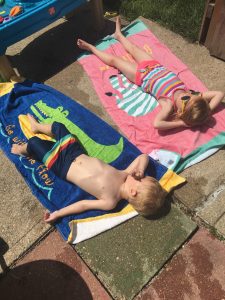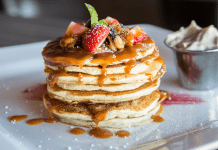 Don’t look now, but your kids are watching. They’re listening. They’re taking it all in. And it may be causing worry and anxiety.
Don’t look now, but your kids are watching. They’re listening. They’re taking it all in. And it may be causing worry and anxiety.
Our kids have been through the wringer this past couple of months. They didn’t get the closure they needed to end their school year and say goodbye to teachers and friends. Activity after activity has been taken from them. Their hearts have had to handle so much disappointment.
Twisting the Truth can Cause Worry and Anxiety.
Last week, the CDC released guidelines offering considerations for ways in which schools can help protect students, teachers, administrators, and staff when K-12 schools start to open. The Center for Disease Control did NOT release an infographic along with this article. However, one was quickly developed by a reader and went rapidly circulating social media. The infographic caught the eyes of others because of its cute design and enormously exaggerated statements.
Scrolling through my social media feed, I saw it repeatedly come up. Moms threatening to home school, others in a complete panic. In an instant, people were in a tizzy about a graphic that poorly attempted to summarize a CDC document in a sensationalized way.
Should we really share the what-ifs with our kids?
I disagree with the dramatized graphic in many ways, including that the main point is to create intense worry and anxiety. The fact that it was posted with recommendations from the CDC was very sneaky and deceptive. Yet, there was something more than that shook me to my core.
I read multiple moms posting comments like “I shared this with my kids, and they started crying.”
Filling up our kids’ heads with the “what-if” situations is not going to help them in any way. It is only hurting. It is only causing more worry and anxiety. It is too heavy.
It is not about keeping our children from reality. It is about letting them be kids.
Local licensed mental health provider Lesley Turner shared with me her thoughts on this topic. Turner states
“As adults, our job is to provide safety, stability, and love to our children. While some may feel that transparency is one way to achieve that, it can also create anxiety and children who are asked to understand and react to things they don’t have the emotional capacity to handle…Many children are very black and white thinkers, and the CDC recommendations as written are nothing if not grey.”
No one knows what’s next.
But we’re going be okay.
It’s summer break. (Less than a week into summer break, mind you.) Your kids are home and deserve the break that summer promises. Summer is about recharging. It is staying up past bedtime and barefoot backyard adventures. It is relaxed schedules and less rush. It is repeated popsicle runs to the freezer and SO MUCH WATERMELON.
My suggestions on creating this haven at home come from an early childhood background, but my best answer is simplicity. Answer questions in a simple way. Don’t be afraid to say you’re not sure of the answer while offering reassurance and comfort. Let them come to you with concerns and not the other way around. There is no doubt that this entire situation is scary. Our children feel that worry and anxiety. It is so important that we are not feeding into that fear. We can parent them in a way that gives hope.
Turner also said,
“Rather than share these recommendations with children, I would advise that parents talk to their kids about the shared feeling of uncertainty. Validate to your child that right now, much is unknown and that it’s okay to be sad, confused, worried, and angry…If your child is demonstrating significant symptoms of anxiety, stress, or depression, please don’t hesitate to contact a professional for support.”
What our kids need most right now is a beautiful, enjoyable summer. And even in this world of upside-down, we can give that to them.


















